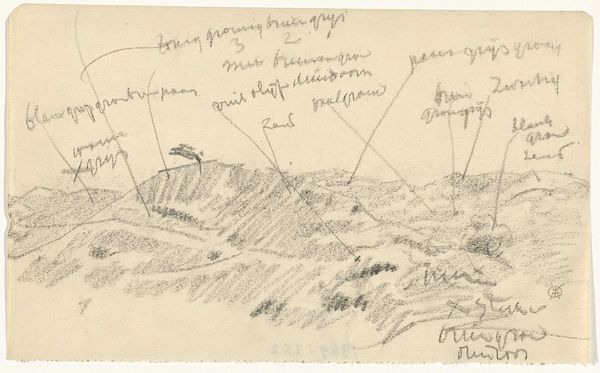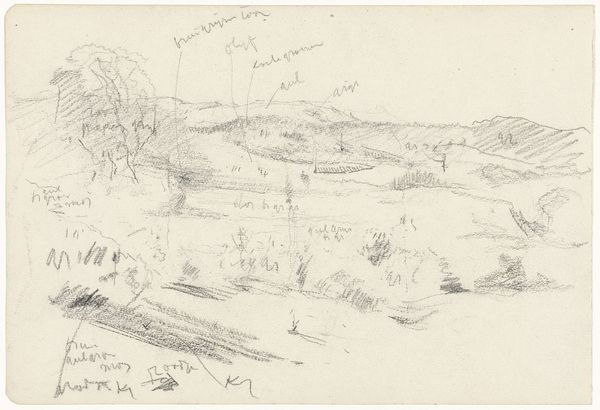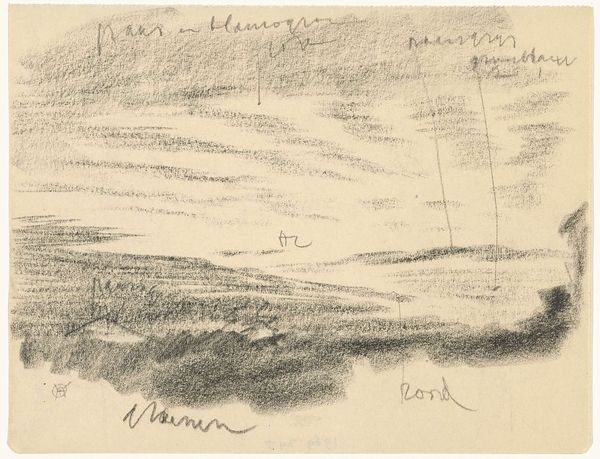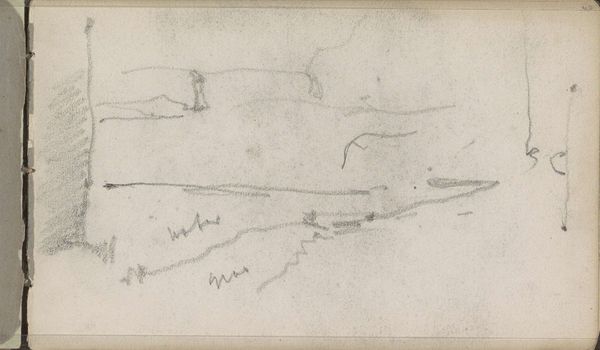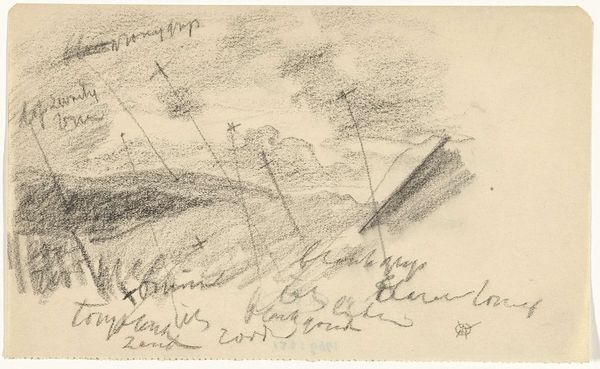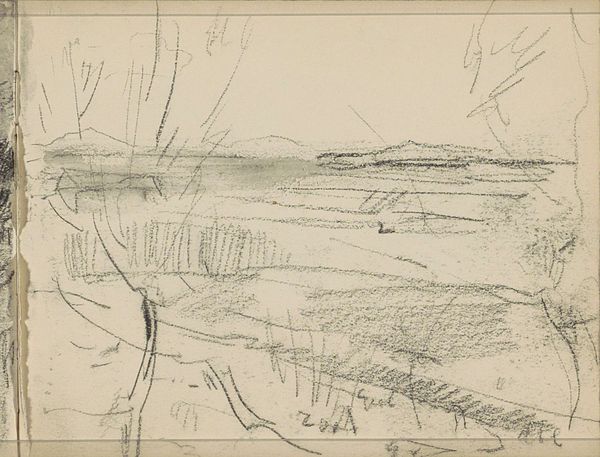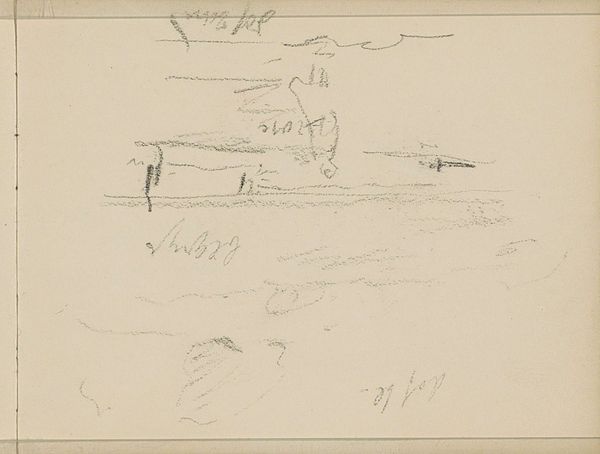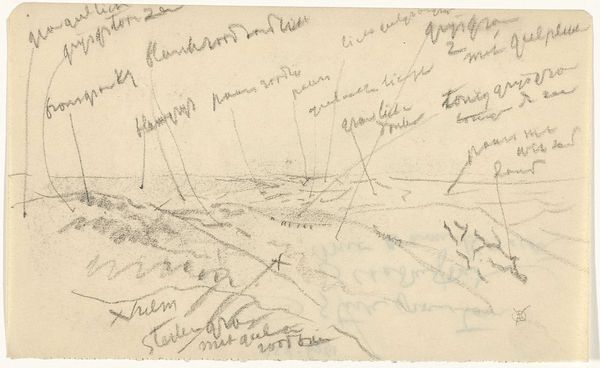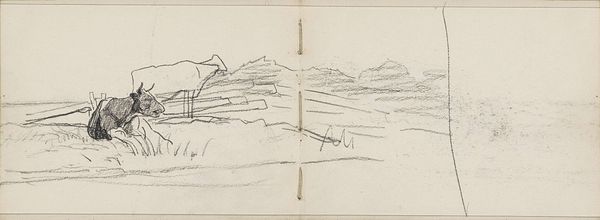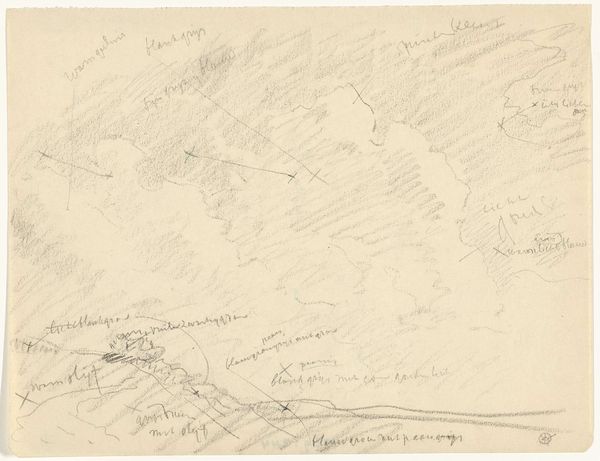
Landschap aan de voet van een heuvel, met kleurnotities 1876 - 1924
0:00
0:00
gerritwillemdijsselhof
Rijksmuseum
Dimensions: height 92 mm, width 158 mm
Copyright: Rijks Museum: Open Domain
Curator: Look at this piece by Gerrit Willem Dijsselhof, dating sometime between 1876 and 1924. It’s called "Landschap aan de voet van een heuvel, met kleurnotities"—Landscape at the Foot of a Hill, with Color Notes. You can find it here at the Rijksmuseum. Editor: It has the intimate feel of a personal sketchbook. All the layered pencil strokes, and little color notes, it gives us insight to the process. Curator: Absolutely, and I think that the annotations are especially illuminating in their exploration of color relationships within this humble scene. Dijsselhof’s impressionistic style, even in sketch form, points to a broader interest in capturing subjective experience. How can we use such works, often relegated to sketchbooks, to reimagine our understanding of landscape art and its socio-political implications, moving away from romanticized visions towards the tangible realities represented? Editor: Well, examining the material Dijsselhof used, like pencil and paper, it reveals how easily landscapes could be made accessible through cheap materials; therefore democratizing image creation by focusing on landscape, traditionally considered to be 'high art', it actually could be argued to provide insights on environmental issues of the time. Curator: It challenges assumptions that these rough sketches do not contribute substantially to the wider development of art historical movements; considering his attention to subtle changes in light and color; that suggests that, for Dijsselhof, color became as much a tool for documenting reality as it was for imbuing it with emotion. This seemingly casual piece provides entry points for investigating themes of identity, observation, and our perception of landscape. Editor: For sure! It helps me think about art making less as something rarefied, more something practical, labor oriented even, especially when you look at what constitutes ‘fine art’ within museums. It also lets viewers recognize themselves as capable of creating work and challenging existing social heirachies regarding artwork and production. Curator: Indeed. It's the unrefined nature of this "Landschap aan de voet van een heuvel" that becomes the most compelling quality. Editor: Definitely seeing beauty in the means.
Comments
No comments
Be the first to comment and join the conversation on the ultimate creative platform.
